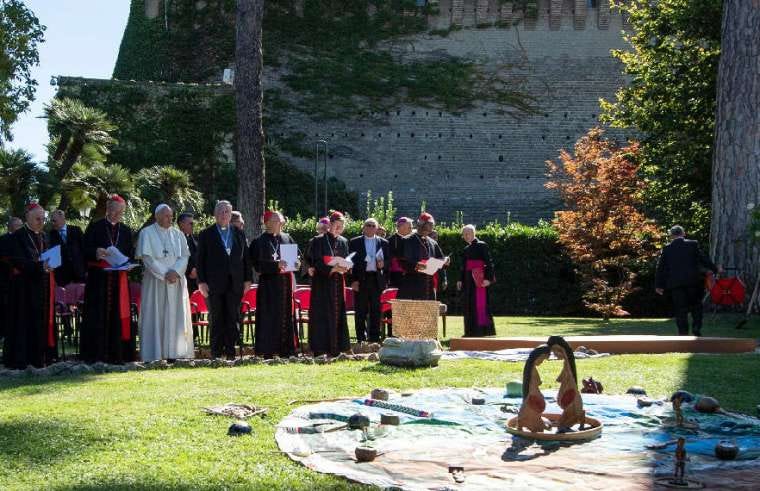From Confusion to Clarity: Pope Leo XIV Restores Christocentrism After the Pachamama Debacle
Where Pope Francis’ gestures left faithful Catholics puzzled, Leo XIV’s measured guidance reaffirms the primacy of Christ, ensuring care for creation and culture never veers into idolatry.
When Pope Francis presided over the Amazon Synod in 2019, the moment that came to define it was not his final exhortation Querida Amazonia, but the strange and troubling presence of Pachamama statues in the Vatican gardens and later in Roman churches. What was presented as an act of cultural respect came across to countless Catholics as an act of idolatry. The images were venerated, prayers were offered, and Francis himself called the figure “Pachamama.” For many, this seemed like an unambiguous validation of an idol, and the very best that could be said was that the whole episode was deeply unwise. Rather than opening dialogue, it confused and dismayed vast numbers of the faithful and damaged Catholic credibility in the eyes of other Christian communities who saw in it a confirmation of their worst suspicions about Rome’s susceptibility to syncretism. Francis was the Pope who moved the papal Corpus Christi procession out of Rome, but allowed idol worship in the Vatican.
The dismay was sharpened by the way so many bishops across the world seemed to embrace the gesture without hesitation. Missio the pastoral agency of the Italian Episcopal Conference even composed a prayer to Pachamama, in an April 2019 publication devoted to the Special Assembly of the Synod of Bishops for the Pan-Amazon Region, Missio set apart three prayers in large type. The prayer to Pachamama (p. 17), described in the publication as a “prayer to Mother Earth of the Inca people,” reads:
Pachamama of these places, drink and eat this offering at will, so that this earth may be fruitful. Pachamama, good Mother, be favorable! Be favorable! Make that the oxen walk well, and that they not become tired. Make that the seed sprout well, that nothing bad may happen to it, that the cold may not destroy it, that it produce good food. We ask this from you: give us everything. Be favorable! Be favorable!
There was no clarification or explanation from the Italian bishops for this absolute travesty. The initial publication went live without public comment or correction, and there’s no record of a formal retracting or apology.
Could this have been handled with careful theological explanation? It seems unlikely to me, but, as became common with Pope Francis, no one even tried and instead it
became a flashpoint of scandal, leaving Catholics unsure of how to reconcile the pope’s defence of the statues with the Church’s perennial teaching on the uniqueness of Christ. Francis’s later exhortation Querida Amazonia was, in many respects, well written and stylistically strong, rich in Christocentric poetry and pastoral concern for the Amazon. Yet, while it reaffirmed care for creation and the dignity of indigenous peoples, it avoided giving definitive answers on the most contentious proposals of the Synod, such as married priests or expanded ministries for women, and it did not directly address the Pachamama episode. As a result, its literary and pastoral strengths were undercut by lingering ambiguity, leaving the Church reassured in some areas but still confused in others. But the Pachamama debacle overshadowed it and made it harder to receive. It left the Church with the impression that fidelity to Christ had been blurred by the desire for cultural accommodation, and Francis never publicly drew the line that was most needed: that the Church respects indigenous traditions, but she does not adopt their objects of worship. Looking back on what I wrote at the time, my main reaction was relief!
Keep reading with a 7-day free trial
Subscribe to Catholic Unscripted to keep reading this post and get 7 days of free access to the full post archives.





